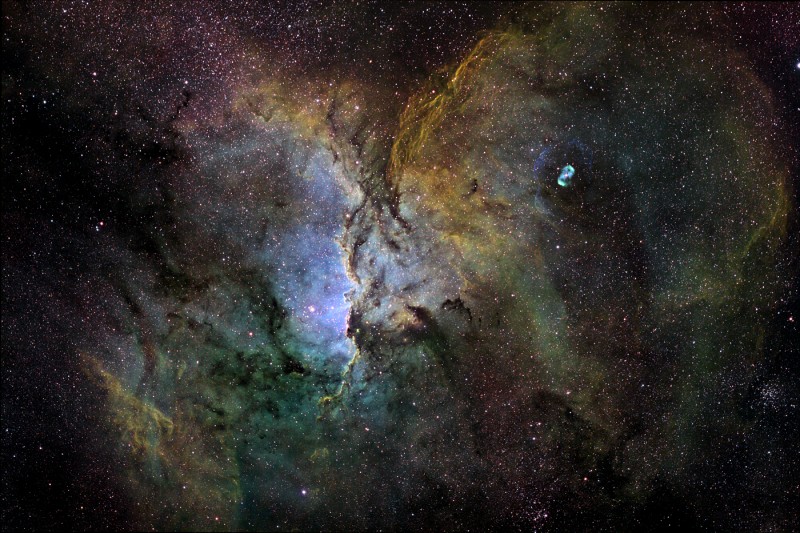Credit & Copyright: John Ebersole
Explanation:
Dark shapes with bright edges winging their way through dusty
NGC 6188
are tens of light-years long.
The emission nebula is found near the edge of an otherwise
dark large molecular cloud in the southern
constellation
Ara, about 4,000 light-years away.
Formed
in that region only a few million years ago, the massive young
stars of the embedded Ara
OB1 association
sculpt the fantastic shapes and power the nebular glow with
stellar winds and intense ultraviolet radiation.
The recent
star
formation itself was likely triggered by
winds and supernova explosions, from previous generations of massive
stars, that swept up and compressed the molecular gas.
A false-color
Hubble palette was used to
create the this gorgeous wide-field image
and shows emission from sulfur, hydrogen, and oxygen atoms
in red, green, and blue hues.
At the estimated distance of NGC 6188, the picture spans
about 300 light-years.
1999 2000 2001 2002 2003 2004 2005 2006 2007 2008 2009 2010 2011 2012 2013 2014 2015 2016 2017 2018 2019 2020 2021 2022 2023 2024 2025 |
Yanvar' Fevral' Mart Aprel' Mai Iyun' Iyul' Avgust Sentyabr' Oktyabr' Noyabr' Dekabr' |
NASA Web Site Statements, Warnings, and Disclaimers
NASA Official: Jay Norris. Specific rights apply.
A service of: LHEA at NASA / GSFC
& Michigan Tech. U.
|
Publikacii s klyuchevymi slovami:
emission nebula - molecular cloud - young stars - molodye zvezdy - massivnye zvezdy - emissionnaya tumannost'
Publikacii so slovami: emission nebula - molecular cloud - young stars - molodye zvezdy - massivnye zvezdy - emissionnaya tumannost' | |
Sm. takzhe:
Vse publikacii na tu zhe temu >> | |
